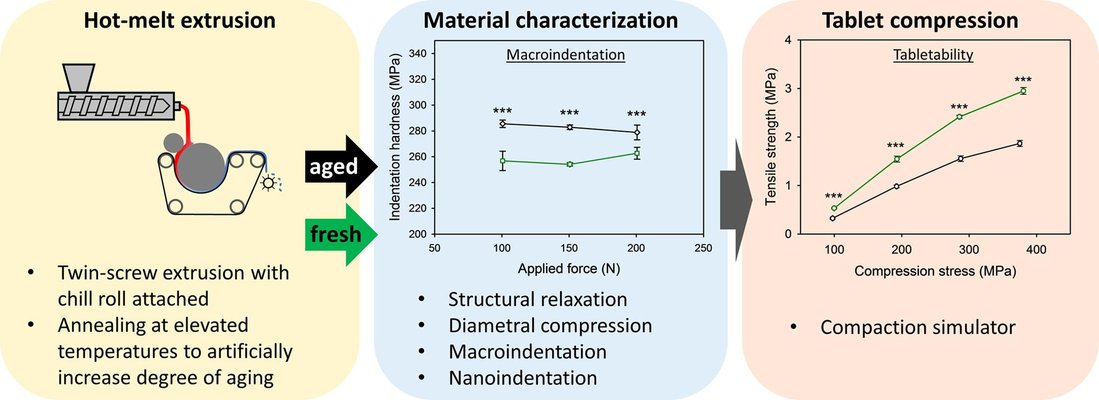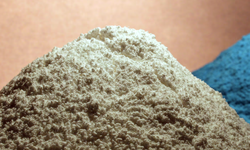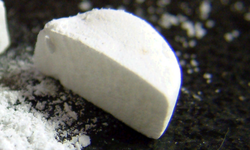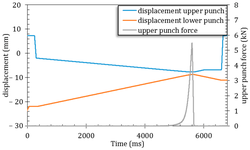Scientific papers
Fusion-based techniques, such as hot-melt extrusion, are commonly employed for the preparation of amorphous solid dispersions. However, the amorphous glass obtained through these methods is not in configurational equilibrium, leading to variations in the molecular arrangement based on the preparation conditions. While changes in the configuration of amorphous materials, known as structural relaxation or physical aging, have been extensively studied, their impact on the mechanical properties of amorphous solid dispersions has been largely overlooked.
This study focuses on copovidone, a model polymer frequently used in amorphous solid dispersions, and reveals that structural relaxation is initiated in the polymer during hot-melt extrusion, with its extent dependent on the cooling rate. The degree of structural relaxation significantly influences the mechanical properties of copovidone, as evidenced by diametral compression tests, macroindentation, and nanoindentation. An increase in Young’s modulus and indentation hardness is observed with a higher degree of structural relaxation, leading to tablets with significantly lower tensile strength during compression.
Moreover, analysis of force-displacement curves during tablet compression indicates a reduced proportion of irreversible deformation with a higher degree of structural relaxation, which correlates well with the increased indentation hardness observed during macroindentation. Hence, comprehending structural relaxation and its impact on material properties is crucial for evaluating the processability and compaction performance of amorphous solid dispersions, considering their preparation conditions and thermal history.

Comments
No comments posted yet.
Add a comment















